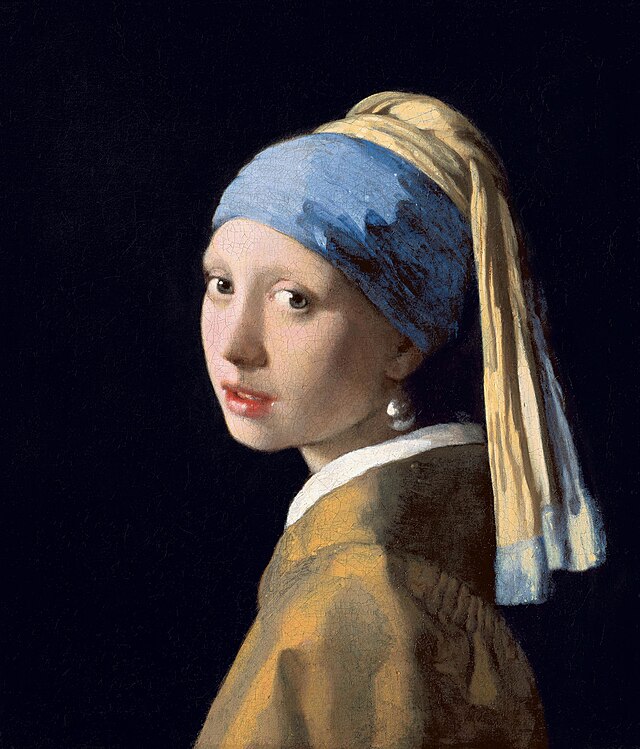Mackenzie Patel
Hello World Travelers! I am very lucky to have amazingly talented friends that appreciate subjects as diverse as art history, B.C. Calculus, and the works of Faulkner. A few of these amigos of mine are taking A.P. Art History at my school, a fascinating course that is so much more than just studying paintings and spitting out the names of obscure artists. It’s a course about broadening one’s mind and exploring the culture of people so much different from you and separated by stretching centuries. For their final project, my friends had to recreate their favorite paintings examined throughout the year—at least for me, I would have recreated Las Meninas and Le Moulin de la Galette because those paintings are simply breathtaking. These “student-edited” versions of famous works are of high quality and a pleasure to view—after all, these same friends are skilled artists as well that have garnered multiple awards in the last year. I feel so privileged to have people so brilliant and genuine only a quick phone call away! Below I have included my friends’ reproductions as well as the original paintings they are based on.
- L’Absinthe by Degas

This hauntingly isolated image was slashed onto the canvas in 1876 by the slightly strange Degas (ironically, this is the same year that Le Moulin de la Galette by Renoir was painted!) The dichotomy between those images is particularly striking—The Renoir one is so joyful, carefree, and playful in color while the Degas rendition is dour, sprinkled with varying shades of gray, and hopeless. The expression on the woman’s face (her actual identity is Ellen Andrée, an actress) is so poignant, especially her downcast eyes that point to her shoulders slumping with defeat and the weight of life. Most people think actresses are supposed to be glamorous and beautiful, while this woman is drowning her sorrows in nasty absinthe. The man clothed in black next to her is Marcellin Desboutin; Wikipedia describes him as “a painter, printmaker and bohemian.” The sketchy quality of the image, the unblended colors, and the muted light differentiate this image from among the mass of Impressionist works depicting galas, sunrises, dance halls, and leafy landscapes. In reality, this painting depicts modern urban isolationism and the divide that new technology and globalization was ripping within the fabric of Parisian society. My talented friend Mar, a beautiful person with a flair for art, recreated this telling image in such an insightful way.
- The Death of Marat by Jacques Louis David

This (also depressing) image is the archetype for Neoclassical paintings because of its depiction of grand heroism, the idealized body of the bloody revolutionary, and the regular symmetry that can be seen in the spare wooden table. David, an artist contemporary with the French Revolution and later court painter to Napoleon, created this masterwork in 1793 and transformed Marat from a petty writer into a national hero. Jean Paul Marat was an outspoken journalist during the Revolution who met his rather inglorious end by being stabbed while taking a bath. Marat suffered from a skin condition (eczema) that required him to spend most of his days wallowing in a tub and writing fiery political articles to pass the time. He was murdered by Charlotte Corday, a fateful name that can be seen on the scrap of paper lying delicately in Marat’s ashen hand. Although this painting is grand and stately, I think it’s hilarious how idealized and sappy it is. Marat has a grisly visage in real life, yet none of his imperfections are shown—instead, his body is chiseled, his muscular arm carelessly lying over the side of the tub resembles La Pieta by Michelangelo, and his expression is so sentimentally dramatic. The dashing fellow, Noah, depicted in the recreation nailed the expression and his bath towel head covering is perfect.
- Girl With A Pearl Earring by Vermeer

Like the Mona Lisa, The Creation of Adam, and The Starry Night, this image is a “must-know” for all those pretentious yuppies who consider themselves cultured and understanding of the world of art. Although the sitter’s identity is unknown, something about her wide eyes, slightly parted lips, and iridescent crater of a pearl dripping from her ear is timeless and unforgettable. Of course, whenever I think of this painting, the film of the same name featuring Scarlett Johansson (2003) pops into mind (which isn’t exactly a pleasant association). Vermeer, a skilled Dutch Baroque artist, crafted this portrait around 1665; his quiet style is exuded in the careful treatment of light, the attention to detail, and the middle class subject staring at the viewer. Erin, the beauty personifying the elusive Vermeer woman, captures the essence of the painting with her porcelain skin and yellow hair covering.
My friends also created a Lichtenstein-esque double portrait complete with cartoon ben-day dots, exaggerated features, and pouty expressions. Although I’m not sure what specific painting the recreation was referring too, the overt influence of pop art is intoxicating. Roy Lichtenstein meshed in with the superficial crowd of Jasper Johns, Andy Warhol, and Rosenquist during the 1960s and 1970s, redefining the direction of American art along the way. His obsession with pop art was born out of his background as a billboard painter and graphic artist. The captions adorning his pop images are often pithy, witty, and ironic, as if Lichtenstein was the greatest critic of his shallow work. For example, he created Oh, Jeff…I Love You, Too…But… in 1964; the thick lines, fake blond hair, and breathy statement by the airhead are exactly in his playful (but disillusioned) style.
Watch 70 Million by Hold Your Horses!, a music video featuring countless art reproductions here. Thanks to the amazing Mar, Erin, and Noah for the photographs!
All other pictures from Wikipedia



